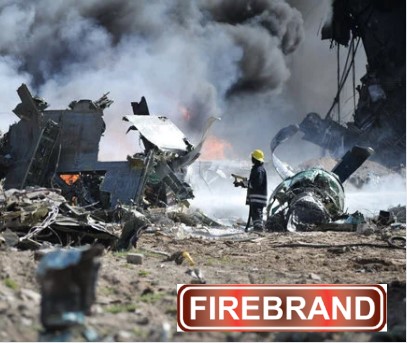Industrial fire risks from processes and products
As we saw in the last article, exploding hydrocarbons are serious Industrial fire risks and can cause serious damage and death. But it’s not only flammable liquids that can cause explosions and fires. Many industrial processes and products carry the risk of fires and explosions. It is not only the damage to the facility itself, but the knock-on effects in the surrounding areas can be serious. In 1994, one such incident occurred at the Terra International ammonium nitrate fertilizer plant in Port Neal, Iowa, United States.
Industrial fire risks in this disaster
The factory produced anhydrous ammonia, nitric acid for the manufacture of ammonium nitrate and urea. It consisted of two parts, the ammonia plant, tank farm and utilities formed one and the other consisted of the nitric acid, urea and ammonium nitrate plants. The ammonia plant made ammonia using methane, water and air and recovered carbon dioxide as a by-product. The ammonia was transferred to storage for sale or for use in the ammonium nitrate or urea plants.
The ammonium nitrate plant produced an 83% ammonium nitrate (AN) solution by reacting ammonia and nitric acid in a vessel called a neutralizer. The AN solution was sold or mixed with urea to form a urea-ammonium nitrate solution.
Prior to the explosion, the ammonium nitrate plant had been shut down because of a nitric acid shortage and had remained shut down until the explosion. The nitric acid plant had been shut down since approximately 05:00 on December 12 and was in the process of starting up when the explosion in the AN plant occurred.
The Incident
At 06:06 on 13th December 1994 an explosion occurred. Four employees were killed and eighteen injured by the explosion. The seven-storey building at the centre of the blast was destroyed leaving a large crater and several surrounding structures were damaged. Additionally, four nearby electricity generating stations were disabled and a high voltage line running next to the plant was damaged disrupting power supplies in the neighbouring state.
The blast was felt up to 30 miles away. Two 15,000-ton refrigerated ammonia storage tanks were ruptured, releasing liquid ammonia and ammonia vapours which forced the evacuation of 1,700 residents from the surrounding area. Approximately 25,000 gallons of nitric acid and liquid ammonium nitrate were also released causing pollution of ground water beneath the factory.
Investigation into the Terra International ammonium nitrate fertilizer plant disaster
During the investigation it was discovered that there were no accurate drawings of the facility. Furthermore, there were no written operating procedures, so investigators had to determine these from verbal accounts. These then had to be reviewed by scientists and engineers.
No process hazards analysis had been completed on the ammonium nitrate plant and staff said that they had not been trained on the multiple hazards of ammonium nitrate. It was also found that there was no engineer directly responsible for managing the operations of the ammonium nitrate plant or reviewing operating procedures.
Investigations also discovered very poor communication and work relationships between operations and engineering personnel. Additionally in the months preceding the explosion, the ammonium nitrate plant was converted to a distributed control system (DCS). The installers communicated very little with most operators, and some felt uncomfortable with the new system once it was up and running due to a lack of training on operations with the new system.
In the days and weeks prior to the explosion, equipment failures and maintenance problems were chronic. The pH probe in the neutralizer rundown line appeared to be malfunctioning with no spares. Ammonium nitrate product pumps were leaking ow not working correctly. Numerous problems were also reported in the nitric acid plant with maintenance struggling to cope.
Conclusions
The investigation concluded that the explosion resulted from a lack of written, safe operation procedures at the ammonium nitrate plant. This lack of safe operating procedures resulted in unsafe conditions that caused the explosion. These conditions were found to be:
- Strongly acidic conditions in the neutralizer and rundown tank, which should have been neutralised.
- Prolonged application of 200 psig steam to the neutralizer nitric acid spargers.
- The creation of bubbles and low-density zones in the neutralizer.
- Lack of flow in the neutralizer and rundown tank.
- The presence of chlorides in the neutralizer and rundown tank.
- Lack of monitoring of the ammonium nitrate plant after the plant was shut down with the process vessels charged.
Takeaway
Are you involved in a production facility? Has a hazard analysis been carried out? Are there safe operating and emergency procedures in place? Is all your instrumentation regularly checked and calibrated? Do you have an evacuation plan? If not, or you are unsure of any facet of your fire and safety program, Firebrand can assist. Prevention of Industrial fire risks are key in these types of accidents. Contact us to discuss your requirements.

